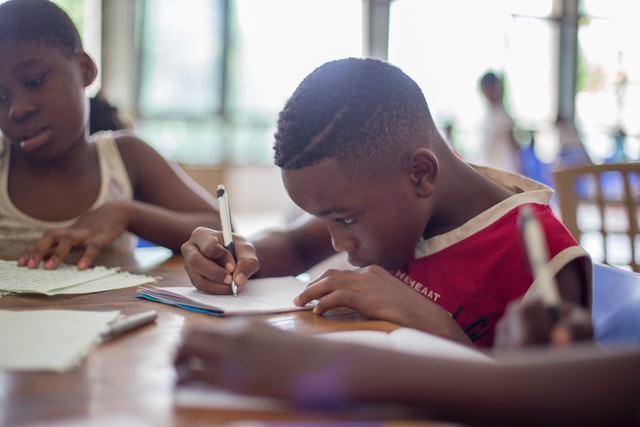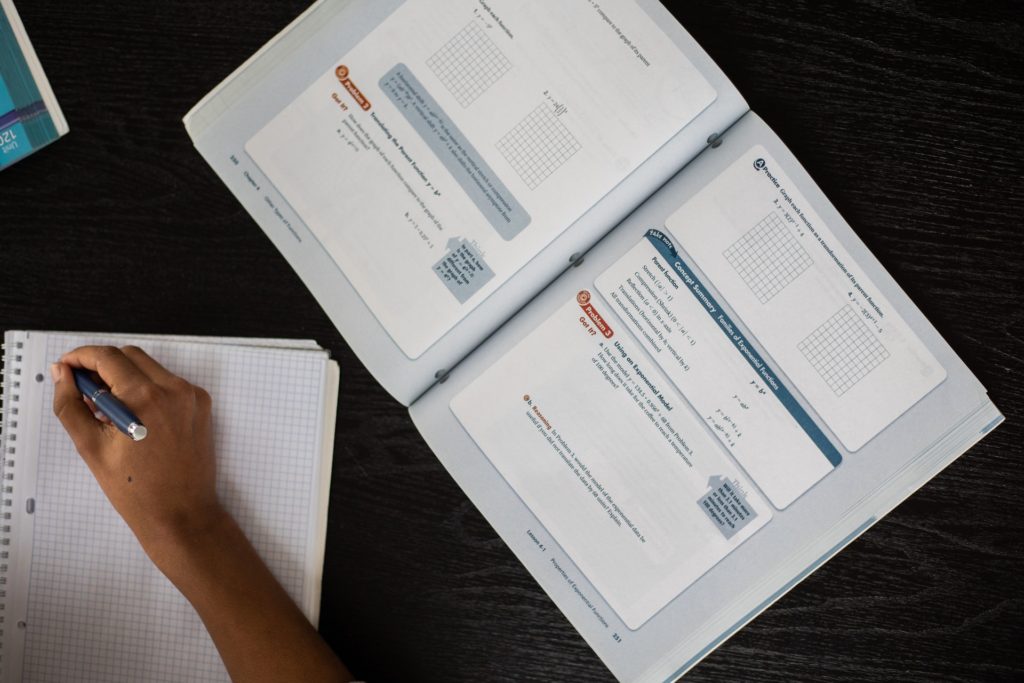Table of Contents
What are Learning Styles?
Learning Styles Theory is a concept in education which states that learners are all different and their brains absorb information more or less efficiently depending on the style of teaching used. Common examples of learning styles are visual, where learners prefer to see things being done to help them understand, auditory, where learners learn best by hearing information, and kinesthetic, where learners learn best by just doing or acting out what they’re learning.
Learning styles are a hotly debated topic and not everyone agrees how they should be utilized in the classroom or if they even exist at all in any real sense. While most people would agree that people learn differently based on how they are taught, some feel it is far too simplistic to try and separate learners into boxes based on just one sensory system.
VARK Model of Learning Styles
The VARK model of learning styles is the most common framework to consider students and their learning styles. VARK stands for Visual, Auditory, Reading/Writing, and Kinesthetic and attempts to categorize learners into one of these styles. Based on the category the student falls into, teachers should use different teaching aids and methods in order to ensure each student learns in the way most optimal for how their brain absorbs information.
- Visual
Visual learners absorb information best when they can see what is being taught in front of their eyes. When teaching visual learners, teachers should not just include pictures, but try to show videos about the topic as well.
Visual learners can sometimes have visual memories and will often say that they can “see where it is on the page” or describe what was going on just before or after an event when pulling from their memory.
When visual learners have to listen to something for a long period of time, it is best to include something for them to fixate on visually. This can be graphs and charts, pictures, video, or really anything that can engage their visual systems in a connected way so that they are less likely to get visually distracted.
- Auditory
Auditory learners are those that prefer to hear an explanation from an expert when learning something new. Rather than trying to make sense of something from just seeing it or reading about it in a book, auditory learners do best when they hear and speak about a topic.
Auditory learners are often the teacher’s pet type, listening intently to lectures and engaging in class discussions, but this is just a stereotype and any learner can prefer learning through listening. While auditory learners tend to be the types most engaged in school, this is because traditional school is built on a foundation of lectures and academic discussion that suits the way their brain learns naturally.
Auditory learners will sometimes be those that ask to listen to music while working or conversely be the ones who need total silence to be able to focus. Teachers can allow these students to use headphones to play music or block out the sounds, but if the student decides to listen to music, the teacher should insist that it be music without lyrics as studies have shown the words to be distracting. (Shih et al.)
- Reading and Writing
Students who have the reading and writing learning type will often prefer to read about topics in silence to give themselves time to fully digest the information they are trying to learn. Reading and Writing learners are often the quieter types in class. While often mistaken for auditory learners, reading and writing learners are often far away in their own imaginations during long lectures and only appear to be listening intently.

These types of students often learn best by taking copious notes and covering their books in multicolor highlighter ink. Keeping a learning journal can help to organize this type of learners’ thoughts, but it is important to not watch that they don’t disengage by getting bored with too many interventions.
There is a subset of reading and writing learners that are like sponges and can absorb information quickly and efficiently yet they get very bored in the traditional school setting. They quickly get concepts, but then get very frustrated with mindless concept check assignments and long lectures reviewing things they just read about the night before.
While students should not be allowed to “get out” of doing simple assignments because they feel they are “above” such tasks, it can often be beneficial to give these types of learners extra challenges and rewards to keep them motivated. The teacher will need to get very creative with these challenges and use their personal rapport with the student to see what will work with them, challenge them, but not allow them to simply skip things they don’t like doing.
- Kinesthetic
Kinesthetic learners are often stereotyped as unintelligent as they often struggle significantly with the way schools traditionally teach information. Kinesthetic learners often do their best when given only minimal instruction before jumping straight into doing whatever task or project they are being assigned.
Teachers should avoid trying to pre-teach concepts or preempt common mistakes for these types of students as they will learn better to avoid mistakes after they have made them. Being told about a mistake to avoid or a concept to keep in mind will often go in one ear and out the other until the student makes the mistake and then gives a loud “ohhh!” as they finally understand what was being talked about before.
While it can often be slow going to teach a kinesthetic learner, they often do the best in professional environments where minimal training is given before expecting independence in figuring out problems in workflow. Rather than requiring a lot of reading or explanation before being able to start work, the ability to jump in and figure things out is very valued in the work world.
The most important thing to work on with kinesthetic learners is building resilience. As they often don’t learn about mistakes until they have made them, they will have to learn not to get defeated when repeatedly facing problems, especially in school where they may be labeled as slow.
Different learning styles
These extra learning styles are often subtypes of the above learning types or an attempt to group learners that seem to spread across multiple categories above. They are less cited, but can be just as useful for teachers in coming up with teaching strategies or interventions for specific students displaying the associated traits.
- Interpersonal
Interpersonal or social learners are learners who learn best when discussing concepts in groups or in a one on one setting. This group is often seen as a subset of auditory learners, but there are some subtle differences.
Interpersonal learners often learn best when they are grouped with people they “click” with. This does not always mean their friends, but when the social dynamic is “off” it can make it very hard for them to learn. Teachers should avoid putting social learners with people they know the learner has issues with. This includes people they argue with as well as people they have a crush on.
While interpersonal learners most often learn best with people they get along with, this does not preclude them from getting very distracted by chatting with their friends. Teachers will need to regularly get these groups back on track, but this is often better than separating them completely.
The sweet spot is getting them to work with people that are not their close friends, but also not their enemies or crushes. This is not always possible, and so they will need to learn to work with all students responsibly.
These learners thrive in group projects, but seem to fall apart when tested alone. Because of this, teachers should check in on this type of student as often as time allows. During solo work, just coming by to talk them through their work will give them a boost and help them get back on track.
- Solitary
Solitary learners are basically the exact opposite of interpersonal learners. Because they are also quiet, solitary learners are often seen as a subset of reading and writing learners, but this is often completely false.
Solitary learners often have social problems and dread group projects and presentations. During group projects, their group members will often describe them as dead weight and get frustrated with them. They may ask to work alone, but this can often not be possible and can prevent them from learning how to collaborate, which is a basic and vital skill for almost every possible type of work.
Instead of simply letting solitary learners do everything alone, they may need to be coached in ways to contribute in groups. These groups will need quite a bit of oversight and the teacher may need to cut in and help divvy up work equally in a way that utilizes all students’ strengths.
In most other situations, solitary learners can be very low maintenance for teachers as they often prefer to be left alone and can often do fine on tests and quizzes when they study alone at home. It is important that the teacher does not allow them to fall between the cracks and get ignored just because they do not cause any issues however.
Despite what they may want, these students need to be mindfully and kindly pushed out of their comfort zone so that they can be collaborative workers, community members, and learn how to cultivate healthy personal relationships. It may be best to get counselors or school psychologists involved to give these types of learners a space devoted to this type of learning, but teachers can absolutely do their part as well in the classroom.
- Logical
Logical learners love learning by thinking and trying to solve problems. While this may initially seem to make them similar to kinesthetic learners who want to get right into solving issues as well, but more often than not, logical learners will be more akin to visual or reading and writing learners. Logical learners are an interesting learning type as they seem to take little bits from a lot of the other learning types and often can be very different from one another as well.
Many logical learners love doing puzzles and playing strategy video games. They love being given a problem, a set of tools, and getting to work figuring out how the tools can help them solve their set problem. They are not often the type to shy away from a challenge, but that does not mean they always love school.
Some logical learners are like social learners, they love being given tasks and working with others to solve them. Other logical learners are more like solitary or reading and writing learners, who would rather spend their time thinking by themselves about issues and writing about various viewpoints and their merits.
Teachers can help this type of student best by trying to gamify their classroom. Making everything seem like a game or puzzle helps keep them interested and feeling challenged. This type of student benefits a lot from extra “challenge questions”, especially when they are given a competitive spin.
Teachers can put a challenge question up on the board that students can only answer with learning from today’s class and reward the first few students to give the correct answer. This will keep them listening and engaged so that they can be the first to solve the challenge question.
Research on Learning Styles

The research on learning styles is very contentious with some results giving them significant importance in learning while others question even their existence at all. This shows that, while there may be some useful lessons for teachers to consider from thinking about their students’ learning styles, teachers should be wary of trying to label and box all of their students into the simple categories outlined above.
One recent study that does give some weight to the importance of considering learning styles when teaching was one conducted using an e-learning program that adapted to a students’ learning style as they progressed. The results showed that those that used the adaptive e-learning program scored significantly higher than those who used a traditional e-learning program. (El-Sabagh)
While this may seem like an obvious win for the learning styles camp, it is important to consider a few limitations of the study. One issue noted in the study was that “students in the experimental group reported that the adaptive eLearning environment was very interesting and able to attract their attention.” (El-Sabagh)
The researchers said this could have been a factor in keeping students engaged and learning more. Since the design of the adaptive e-learning program was more engaging than the traditional e-learning program, it is not truly a fair comparison of the effects of adapting to learning styles, but also in program design.
Additionally, the way the study measured success was in the students ability to score higher on a post-test. While many see the results of a test as a good measure for “learning” this is an outdated and reductive view on education. While the students were able to score higher on a test after the program adapted to their learning style, this is not necessarily always the goal of education and is more reminiscent of the “teaching to the test” methods.
While students may score higher on the following test that learning is being adapted to prepare students for, that does not mean that students are truly able to use that information in any useful context. Focusing on only using student strengths also does not build up their weaknesses. While giving students activities that rely on their strengths may make things easier in the short term, it actively does not target their weaker skill sets.
In the long term, this may limit their overall abilities and make them only able to complete tasks when everything is designed for them individually rather than making them adaptable learners who can handle whatever life throws at them.
A different study that looked at all of the previous research done on learning styles found that none of them contained proper research protocols that would be necessary to prove learning styles should be a major teaching consideration. (Pashler et al.) They claim that in order to have any valid data, students would need to be evaluated to find their proper learning style before being randomly assigned to an adaptive teaching model that may or may not match their learning style.
At the end of the study, each student would need to take a test that was the exact same for all students. Only if students who were assigned to a cohort that matched their learning style always performed better than those who were mismatched could any effectiveness be confirmed for dividing students based on their learning styles.
The authors of the study say that these types of studies have not been conducted and so claims about learning styles are unfounded. Even if students did always perform better when teaching style matched their learning style, this still leaves the question of if test performance is truly an effective measure of true learning.
Not all studies are so dismissive of learning styles, however. One study found a relationship between teaching based on learning styles and students ability to learn a second language. (Hatami)
These findings are more encouraging as it is not just based on test results, but students’ ability to use a language in multiple contexts. Unfortunately, the researchers said that “these studies have generally found only a weak relationship.” This shows that while there is a connection, it is currently experimental or teaching models are insufficient to make much of a difference.
Most of the studies done on learning styles have happened in a closed laboratory setting rather than in a traditional classroom. This has led to other questions about whether it is really a teaching technique or rather just a neuroscientific theory.
Another study called learning styles a “neuromyth” and said that teachers understand the terms poorly. It also showed that teachers do not have an organized approach to how to respond even if they identify a student as fitting one of the categories.
The researchers found that the use of the term “learning styles” in education may be common, but the practices utilized by teachers to identify and change their classroom practices were individualized and informal. According to the head researcher, in order to identify the learning style of their students, “educators reported using a variety of methods, spanning from observation and everyday contact to the use of tests.” (Papadatou-Pastou et al.) The implementation of interventions based on the identifications was equally as haphazard and informal.
This highlights one of the major issues of learning styles in that it is merely a vague framework meant to categorize students into types of learning without giving much thought to clear interventional approaches. Until learning styles can become a more formalized approach with set ways to “diagnose” students with a certain learning style, proper interventional strategies can not be effectively tested, let alone recommended.
Conclusion
So does this mean that learning styles are a complete myth? Mostly, yes. While learning styles is not a formal educational system, and more of a personality quiz, that does not mean that there is not any merit to understanding how students prefer to or are more capable of learning, however
Studies all agree that students have a preferred way of learning and that different students learn differently. The problem comes when students are forced into a single box that says they only excel in using one of their senses when learning.
Most students will have a way of learning that they pick up on most quickly, but that should not be the only way they learn. Generally, learning is best done with a combination of sensory inputs that all work to give a clear understanding of a topic in multiple contexts.
When reading through the descriptions of each learning style, people often find that they feel described in multiple different categories rather than just a single category. This is because learning styles often end up being a lot like astrology. It uses vague descriptions that end up describing a lot of different people rather than being a clear diagnosable difference in learning behavior.
Many students will favor a certain learning style for one subject, but another for a different one. For example, perhaps a student prefers to learn from lectures in English class because the teacher is very engaging and funny while they feel more like a logical or kinesthetic learner in science class, preferring to do experiments rather than just hear about scientific processes in lectures. While many students seem to have a general preference when learning, these preferences change based on situation and change over time as well.
These preferences also ignore the quality of the resources and assume that the only difference to consider is learning preferences. Teachers can not always find different resources to suit each type of learner that are all of equal quality. What if for a certain topic, a teacher can find a good video for the visual and auditory learners, but only a very simple website where kinesthetic learners can use a poorly designed interactive program? Does the teacher choose to keep students separate and work with their learning style or should they show everyone the high quality video?
This also ignores that everyone needs to be able to learn from and use all of their senses at some point. A perfect example of this is when learning another language. Auditory learners can not simply only speak and ignore writing completely or they will never master the language. Similarly, a visual learner can not just focus on writing and never learn to speak.
Most learners in almost every subject will learn best with a mixture of different resources and tools that activate different sensory pathways. Despite the resources being more or less helpful for different students based on their learning styles, this does not mean that they are not worth using.
In fact, a teacher’s job is not simply to make everything as easy as possible, coddling students by giving them tasks they are already good at, but instead to challenge them and push them past their weaknesses. Because of this, every student should be exposed to content and resources that work with learning styles different from their preferences. In many ways, there is a better case for having students learn in ways they are naturally less gifted naturally so that they can be better able to learn in more ways and be more adaptable adults in the future.
While teachers should not divide classrooms by learning styles, they can still be useful to keep note of how students tend to learn in their class. When the student is struggling, the teacher can use interventional tools that support the students learning style and help them to catch up and feel less frustrated or depressed.
At the beginning of the year, teachers should always note information about their students in a file to be able to refer to later. Whether that file includes information about a “learning style” is up to the teacher, but it can often be a helpful way to quickly see what types of help might best help a student out of a tricky slump.
Want more like this? Make Lab to Class a part of your weekly professional development schedule by subscribing to updates below.
References
Hatami, Sarvenaz, “Learning styles”, ELT Journal, vol. 67, no. 4, October 2013, pp. 488-490, https://doi.org/10.1093/elt/ccs083
Papadatou-Pastou, Marietta et al. “The Learning Styles Neuromyth: When The Same Term Means Different Things To Different Teachers”. European Journal Of Psychology Of Education, vol 36, no. 2, 2020, pp. 511-531. Springer Science And Business Media LLC, https://doi.org/10.1007/s10212-020-00485-2.
Pashler, Harold et al. “Learning Styles”. Psychological Science In The Public Interest, vol 9, no. 3, 2008, pp. 105-119. SAGE Publications, https://doi.org/10.1111/j.1539-6053.2009.01038.x.
Shih, Yi-Nuo, Huang, Rong-Hwa, and Chiang, Hsin-Yu. ‘Background Music: Effects on Attention Performance’. 1 Jan. 2012 : 573 – 578.



